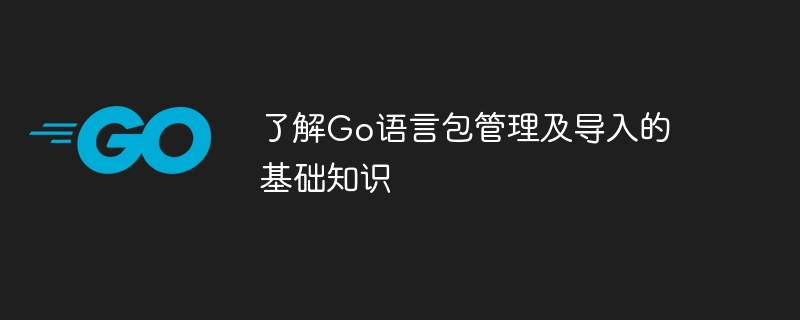

Title: In-depth understanding of the basic knowledge of Go language package management and import
When learning and using Go language, package management and package import are very basic and important Knowledge points. This article will introduce the package management and import of Go language from the basics, and will also provide specific code examples to help readers understand these concepts more deeply.
In Go language, package is the basic unit for organizing code. A package can contain multiple .go files, and it is common to put related functionality or types of code in the same package.
To create a package, just declare the package name using the package keyword at the top of the Go file. For example, we create a package named utils, which contains a Sum function:
package utils
func Sum(a, b int) int {
return a + b
} to be used in the Go code To use the function of other packages, you can use the import keyword to import the package. When importing packages, you can use relative or absolute paths. The following is an example of using the Sum function in the utils package:
package main
import (
"fmt"
"your_module_path/utils"
)
func main() {
result := utils.Sum(3, 5)
fmt.Println("3 + 5 =", result)
}Go language introducedGo ModulesAs a package management tool, it is used to manage third-party packages used in Go code. You can initialize, add, delete, upgrade dependencies and other operations through the go mod command.
First, use the go mod init command to initialize a new Go module:
go mod init your_module_path
Then, you can use the go get command to get the dependency package :
go get -u github.com/gin-gonic/gin
Finally, use the go mod tidy command to sort out dependent packages and update the go.mod file:
go mod tidy
Sometimes you encounter conflicts in imported package names, which can be solved by using aliases. For example, both packages have a function named Sum, which can be distinguished using aliases:
package main
import (
"fmt"
mutils "your_module_path/utils"
"other_module_path/utils"
)
func main() {
result1 := mutils.Sum(3, 5)
result2 := other_module_path.Sum(3, 5)
fmt.Println("Your module's Sum: 3 + 5 =", result1)
fmt.Println("Other module's Sum: 3 + 5 =", result2)
}Through the above introduction and examples, readers should have an understanding of the package management and import of the Go language. gain a clearer understanding. Package management is an important concept in the Go language, which can help us better organize and reuse code. I hope that after studying this article, readers can become more proficient in using package management and import knowledge in actual project development.
The above is the detailed content of Understand the basic knowledge of Go language package management and import. For more information, please follow other related articles on the PHP Chinese website!




